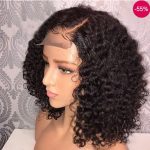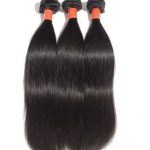Hair extensions have become hugely popular in recent years, providing an easy and convenient way to obtain longer, thicker, and more voluminous hair. However, with so many different types of extensions available, it can be difficult to know where to start.
In this comprehensive guide, Sittingprettyhalohair aims to explain everything you need to know about hair extensions, from pricing and aftercare to selecting the right type of extension for your hair.

Who are extensions for?
Hair extensions are for anyone who wants to enhance the length, volume, or thickness of their hair. Whether you’re looking for a temporary fix or a more permanent solution, there’s a type of extension that’s right for you.
Is there anyone who shouldn’t get extensions?
While hair extensions are suitable for most people, there are some cases where they may not be appropriate. For example, fine or thin hair may not be able to support the weight of the more intrusive types of extensions, while those with very curly hair may find it difficult to blend the extensions in with their own hair.
If you have these hair types, don’t be discouraged! We have good news for you! Sittingpretty halo hair extensions are specifically designed for fine hair, and their highest-quality Remy hair allows you to style the extensions to be as curly as you want.
If you want to get an idea of how they would look on you, check out our videos at https://www.sittingprettyhalohair.com/pages/videos. We promise that what you will see there will forever change the way you look at hair extensions!
What types of extensions are available?
There are several types of hair extensions available, including halos, clip-in, micro-ring, tape, keratin-bond, and weave-in extensions. Each type of extension has its own pros and cons, so it’s important to select the one that’s right for you based on your hair type, lifestyle, and desires.
How do you know which extensions to select?
The best way to know which extensions to select is to consult a professional stylist. They will be able to assess your hair type and lifestyle, and, based on that information, they will be able to recommend the best type of extension for you. They will also be able to provide advice on how to care for your extensions and how to get the most out of them.
As it happens, we at Sittingpretty can help you pick the right color and thickness of hair extension to best complement your hair. Simply send us 2–3 photos of your hair in good lighting, and we will let you know which halo hair extensions will be just right for you.
Do extensions need to be dyed to your hair color?
While it’s not necessary to dye your extensions to exactly match your hair color, it’s recommended to do so in order to achieve a natural-looking result. Extensions are available in a wide range of colors, so you’re sure to find one that’s a great match for your hair.
Related Posts
Can you have extensions with a balayage?
Yes! Extensions can be styled with a balayage technique to create a great natural-looking result. If you’re considering balayage extensions, it’s best to speak with a professional stylist to ensure that the color and style will be blended seamlessly into your own hair.
Do extensions cause hair damage?
If extensions are applied, maintained, and removed correctly, they shouldn’t cause any damage to your hair. However, if extensions are not installed correctly or if they’re not cared for properly, they can cause damage, including breakage, tangling, and matting.
The possibility of damage is also dependent on the type of hair extension used. The least intrusive ones, like halos from Sittingpretty, will not damage your hair in any way.
How much do hair extensions cost?
The cost of hair extensions varies depending on the type of extension, the quality of the hair, and the length and volume you want. On average, clip-in extensions cost anywhere from $50 to $200, while more permanent options, such as micro-ring or keratin-bond extensions can cost anywhere from $300 to $1,000.
Our halo hair extensions start at $135. Plus, we have a flexible pay-in-4 option!

How should you care for extensions?
Hair extensions are an investment; it’s important to take proper care of them in order to make them last as long as possible. The key to good aftercare is to be gentle and avoid using any products that may damage the extensions.
Brushing and detangling: Gently brush your extensions every day to prevent tangles and matting. Start from the bottom and work your way up; use a wide-toothed comb or a brush specifically designed for extensions.
Washing and conditioning: It’s important to use a sulfate-free shampoo and conditioner to avoid damaging the extensions. When washing your extensions, be sure to avoid tugging on the extensions and be gentle when applying the products. After washing, gently blot the extensions with a towel and then let them air dry.
Heat styling: If you plan to heat style your extensions, it’s important to use a heat protection spray. This will help to reduce the risk of damage and ensure that the extensions stay in good condition.
Do extensions work in all hair types?
Hair extensions can work with all hair types, including fine, curly, and kinky hair. The key to getting something that works for you is to choose the right type of extension and to have them installed by a professional who is experienced in working with your hair type.
It’s important to discuss your hair type and the extensions you’re interested in with your stylist before getting extensions. They will be able to advise you on the best type of extension for your hair type and ensure that the extensions are installed correctly.
How do you take extensions out?
Taking out extensions can be a delicate process, so it’s important to follow the guidance provided by your stylist. In general, extensions are removed by either cutting the bonds or loosening the rings.
If you have bonded extensions, your stylist will use a bonding remover to dissolve the bonds thereby releasing the extensions. If you have ring extensions, your stylist will carefully loosen the rings and then remove the extensions.
It’s important to avoid pulling on the extensions or trying to remove them yourself, as this can cause damage to your own hair. If you’re unsure about how to remove your extensions, it’s best to seek the advice of a professional stylist.




